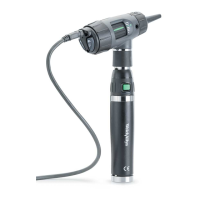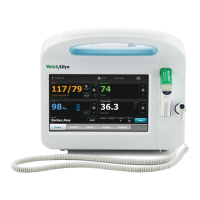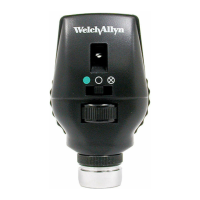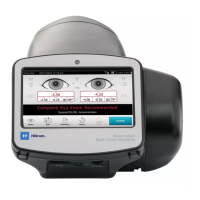D-52
MicroTest
CAVITY
2.0cc
0.5cc
R
-400
-200
0
200
2
0.5
0
1.0
1
GR
A
GR
B
PRESSURE - DaPa
Ya - mmho
+200 Vea - cc
5. A properly functioning instrument will produce a flat tympanogram and
an ear canal volume (Vea) which corresponds to the cavity tested. There
is an acceptable range for each cavity (see Table 7) both at sea level
and at different altitudes. An example is provided in Figure 44 below.
Note that all data points must fall within the two bottom rows of the graph.
Tympanogram from 0.5 cc cavity
Figure 44
Table 7 – Expected Vea Readings for MicroTest Cavity
Cavity Acceptable Acceptable Acceptable Acceptable
Measured Tolerance Range at Range at Range at
Sea Level 2600 Ft 5000 Ft
(792 m) (1525 m)
0.5 cc ±0.1 cc 0.4 cc to 0.6 cc 0.4 cc to 0.6 cc 0.5 cc to 0.7cc
Cavity
2.0 cc ±0.1 cc 1.9 cc to 2.1 cc 2.1 cc to 2.3 cc 2.3 cc to 2.5 cc
Cavity
If the readings do not fall within the acceptable range, then the MicroTymp2
Handle requires calibration. Send the MicroTymp2 Handle to a Welch Allyn
service location. See Appendix E, “Service and Warranty Information,” for a
complete listing.
As the altitude above sea level increases, the admittance of an air-filled
cavity also increases. Therefore, at altitudes above sea level, results using
MicroTest Cavity change, as listed in Table 7.
NOTE: While the MicroTest Cavity provides a functional test, it
does not replace full calibration. Welch Allyn recommends that
the MicroTymp2 Handle be recalibrated annually.

